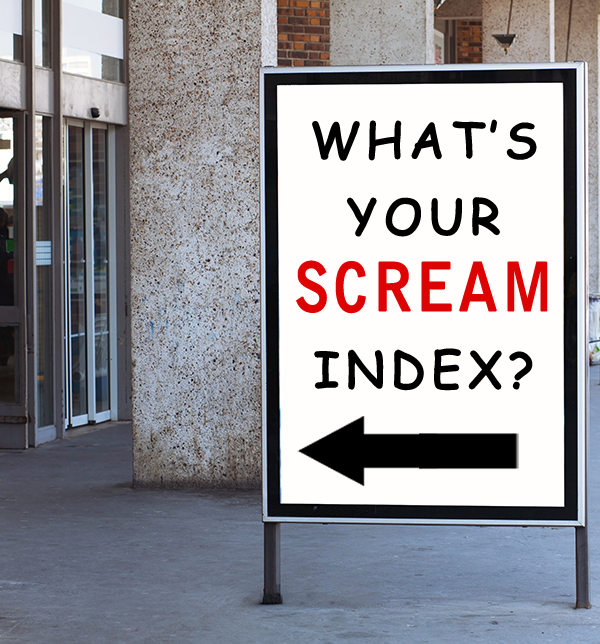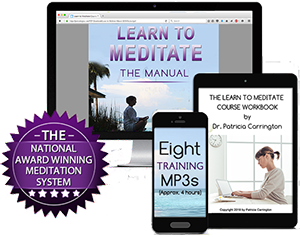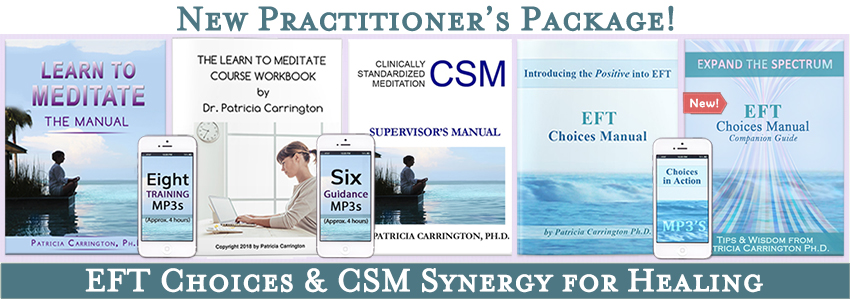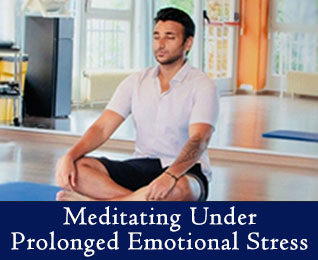 The Scream Index and CSM
The Scream Index and CSM
Deep within the labyrinthine of a large NY corporation, a group of employees was sitting in swivel chairs around a long table, in a windowless seventh-floor conference room, furnished in an antiseptically modern style. They were talking about the unexpected transformations they had just experienced.
Their journey began in the spring of 1978 on their way to work when they saw a large sign at the company’s entrance.

They followed the arrow into the building and continued following similar signs throughout the building until they reached the conference room door.
Little did they suspect they would soon become part of a six month, highly unusual, experimental program that was a brainchild idea of the company’s illusive medical director and developed by Dr. Patricia Carrington. This was a life-changing program that made local headline news and eventually became known by people all over the world.
As each worker entered the room, some college students in bell-bottoms and bangles approached and gave each of them a sheet of paper. It was a self-scoring quiz entitled, “What’s your SCREAM index?”
They were to answer how often they experienced various conditions from headaches, insomnia, depression, and irritability to tingling sensations, fear of being alone, pain, and other stress-related symptoms.
As the students gathered the finished quizzes from the group of employees, quiz-takers went on to attend an introductory meditation session during their lunch hour.
Ultimately, 154 employees became part of the landmark pilot study on Clinically Standardized Meditation (CSM) in the workplace.
The pilot study led to one of the largest company-wide programs (80,000 employees across New York State) used to teach this new form of meditation to people in the workplace.
The goal was to reduce employee stress and improve employee job performance, health, and well-being. And it was extremely successful!
The Results Using CSM…
Back at the long conference room table, where this true story began, Mary, an administrative clerk at the company who was approaching retirement in a few years, shared her transformational experience with the other employees.
Mary’s Experience
“I was so sweet and so quiet. I hated my inferiority complex,” she admitted. Now I’ve started to speak back. I have more respect for myself and can look people in the eye.”
Ernesto’s Experience
“I’m constantly dealing with customers,” said Ernesto, who was a company representative in his mid thirties. “When I used to get a complaint, I would often react and get angry at the company. Now I don’t have as many tantrums. I assess the whole situation and try to work out a solution. Shouting isn’t going to get it done.”
Minnie’s Experience
Minnie was a clerk in the engineering department and mother of five. She proclaimed, “I have far fewer headaches, more energy at work, and I’m not as tired when I get home.”
The benefits expressed by these three participants represent a mere portion of the complete documented benefits.
Psychological test (SCL-90-R) results from the study revealed that CSM decreased many troublesome problems in a variety of categories, and in one key category – covering psychosomatic symptoms – the meditators were “considerably healthier than normal” by the end of the study.
So are you curious…
Can CSM help you transform your life?
Related Product
 The Learn to Meditate Course
The Learn to Meditate Course
This “award-winning” course was the recipient of the National Health Association Award for the Best Corporate Stress Management Program of the Year and has been used as a major means of stress reduction in medical centers and other health organizations throughout the world.
The course is considered by many authorities to be the simplest, safest, and most authoritative form of meditation.






